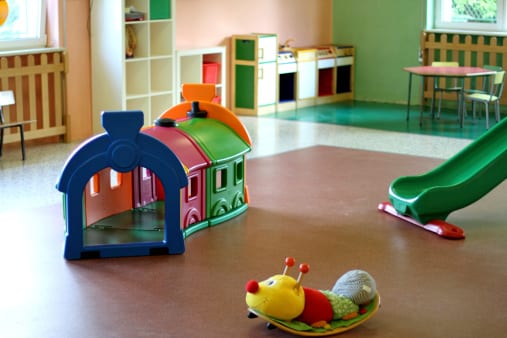A Green Start for Your Baby
The bodies of all US pregnant women carry multiple chemicals, including some banned since the 1970s and others used in common products such as non-stick cookware, processed foods and personal care products, according to a new study from the University of California San Francisco.
The study marks the first time that the number of chemicals to which pregnant women are exposed has been counted. Among the chemicals found in the study group were PBDEs, compounds used as flame retardants now banned in many states including California, and dichlorodiphenyltrichloroethane (DDT), a pesticide banned in the United States in 1972.
“It was surprising and concerning to find so many chemicals in pregnant women without fully knowing the implications for pregnancy,” said lead author Tracey Woodruff, PhD, MPH, director of the UCSF Program on Reproductive Health and the Environment.
“Several of these chemicals in pregnant women were at the same concentrations that have been associated with negative effects in children from other studies. In addition, exposure to multiple chemicals that can increase the risk of the same adverse health outcome can have a greater impact than exposure to just one chemical,” said Woodruff, an associate professor in the UCSF Department of Obstetrics and Gynecology and Reproductive Sciences.
Protecting your baby
The first few months of pregnancy, while your fertilized egg matures to a fully formed fetus at 12 weeks, is the most vulnerable time for your baby. During this time, your little one’s organs and systems are developing and are susceptible to a host of environmental exposures—from illness in you to chemicals in the environment.
SEE ALSO: Green Cleaners
In fact, when experts in conjunction with the Environmental Working Group (EWG) studied the umbilical cord blood of African American, Asian and Hispanic heritage babes, they discovered more than 200 chemicals known to be toxic—or poisonous.
“Our wombs are no place for poisons. Our babies have the right to be born toxic-free,” said Laurie Valeriano, Policy Director of the Washington Toxics Coalition and mother of three, at the release of the study results.
SEE ALSO: Have an eco-friendly pregnancy and birth and Use Prebiotics & Probiotics to Promote Your Health
Keep it clean naturally
Children can accidentally be exposed to harsh, corrosive cleaners causing burns to skin and eyes, while inhaling fumes from the cleaners can cause lung damage. A lifetime of exposure to low levels of these household chemicals may increase the risk of your child developing serious health conditions, such as cancer, reproductive problems, or infertility.
As you clean, open windows and doors in your house to avoid trapping toxins. Avoid anti-bacterial enhanced products; if you regularly wash your hands, there’s no need for this chemical addition, says the American Medical Association.
Diane MacEachem, author of Big Green Purse, reminds us that as women, we are predisposed to protect health and the environment. We spend 85 cents of every dollar in the marketplace. Money talks and we have loud voices, especially when it comes to protecting our children, including those in the womb.
SEE ALSO: How to Create an Eco-Friendly Nursery
Raise Eco-Healthy Kids
To reduce your baby’s exposure during pregnancy and post-birth the EWG recommends the following strategies.
1. Reduce your own chemical footprint
Especially while pregnant. If you smoke, stop. Don’t consume alcohol in any form. Eat a healthy diet that excludes genetically modified foods (GMOs). The vast majority of processed foods contain derivatives of the top 5 GMO crops: soy, cotton/cottonseed, canola, corn, and sugar beets/sugar. The journal Reproductive Toxicology recently reported that the Bt-toxin, produced in GM corn and cotton plants and that is toxic to humans and mammals and triggers immune system responses, is found in 80% of unborn babies and 93% of pregnant women.
2. Drink clean water
Filter your water to avoid chlorine, perchlorate and lead. If you’re out and about, use a stainless steel, glass or BPA-free plastic containers.
3. Breastfeed safely
Straight from the breast is best, but if you need to bottlefeed breastmilk or formula, avoid plastic bottles that can contain BPA and use glass ones. Avoid latex nipples and opt for silicone instead. Use filtered water for mixing formula.
4. Create an eco-healthy home
This can reduce exposure to toxic substances for everyone in your family. Start in the kitchen by eliminating non-stick cookware, plastic containers, opt for boxed or frozen over canned foods as the linings can contain the plasticizer BPA, and use eco cleaners wherever possible.
Making Your Home Comfortable for Baby
Steps After Bringing Baby Home
Have an eco-friendly pregnancy and birth
How to Relieve Your Infant’s Pain
Plus more must read articles in our Newborn Care section






Comments are closed.